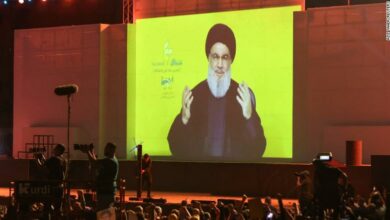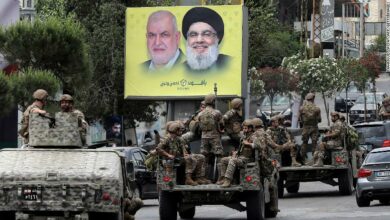
As the Syrian civil war gets ready to enter its sixth year, Hezbollah has paid a heavy price for supporting the Assad regime in its ruthless campaign against the Syrian people.
Hezbollah first emerged in the 1980s as a Shia militia after Israel invaded Lebanon during the country’s 15-year civil war.
It later fought a guerilla war against Israeli-backed forces in southern Lebanon, which eventually led to a full Israeli withdrawal from southern Lebanon in 2000.
In 2006, a massive Israeli offensive against Hezbollah – which included an intense campaign of airstrikes – caused widespread damage across the country, including in capital Beirut, leaving at least 1,300 Lebanese dead.
According to US intelligence sources, Hezbollah reportedly has nearly 6,000 fighters in Syria.
The UK-based Syrian Observatory for Human Rights said that more than 1,000 Hezbollah fighters have been killed in Syria so far, but it is difficult to verify the figures because Hezbollah is highly secretive about the size of its militia in the war-torn country.
Hezbollah’s involvement in the Syrian civil war can be summarized as follows:
2012
Hezbollah denied international media reports that its militia had been fighting in Syria. The group later said its fighters were in the country to protect strategic areas where Shias lived.
Later that year, several Hezbollah fighters were killed in Syria, but the group continued to claim that its fighters were in the country to provide training and refuted reports that its members had been fighting on the frontlines.
Hezbollah Secretary General Hassan Nasrallah did not authorize the presence of Hezbollah fighters in Syria. He, however, said that “the dead fighters” had been fighting in Syria on “jihad missions.”
2013
By now, Nasrallah flip-flopped and said that Hezbollah was fighting against “extremist groups” in Syria.
“We will win. We will never let Syria fall,” he said.
In May, the group went in full force and captured the strategic central town of al-Qusayr from opposition forces near the border with Lebanon.
Hezbollah lost more than 100 fighters and nearly 300 of its militants were injured in the battle.
2014
While Hezbollah forces fought opposition forces in Beqaa valley, Idlib, Latakia and Aleppo, the militia continued to suffer heavy losses.
2015
Hezbollah continued to be an important backer of the Syrian regime, but it lost many senior commanders in the fight.




